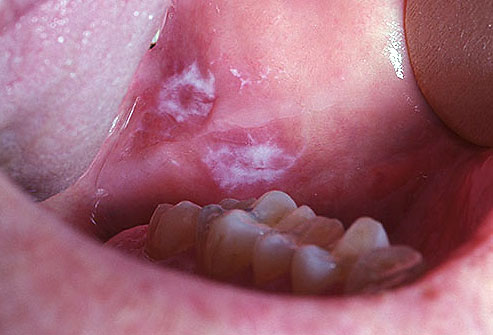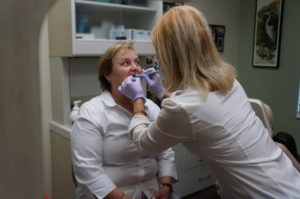What causes oral cancer?
1.  Tobacco Use
Tobacco Use
The highest cause of oropharyngeal cancer is tobacco use from smoking, smokeless tobacco, dipping, chewing, and oral tobacco.
2. Human Papilloma Virus (HPV)
The second most common cause of oral cancer is HPV. HPV can be contracted in a number of different ways but it always occurs when the virus enters your body from skin-to-skin contact. This can be:
- Any Sexual intercourse (oral, vaginal or anal)
- Skin-to-skin touching in the genital region
- Touching an open cut or abrasion in the skin
3. Family History
If you have hereditary components to oral cancer and you have a family history of oropharyngeal cancer, like say your mother had it, but she wasn’t a smoker, then you have a higher risk. This would be just like if your mother or sister had breast cancer, then you have a higher risk of developing cancer too. In this case, you should be checked thoroughly by your dentist every single visit.
What are the signs of oral cancer?
Oral Lesions
Oral lesions can be a sign of oral cancer, but they can be hard to see because they’re typically further down the pharynx.
“Warts” on the Tongue
Occasionally, you’ll see lesions on the tongue, palette or throat, which almost look like a small wart. This type of lesion looks like it has little fingers on it.
 Red or White Dots and/or Patches
Red or White Dots and/or Patches
It also could start by looking like a tiny little red dot to a big large red and white, ulcerated patch on your cheek, tongue, or palette.
Blue or Purplish Spots
However, spots that are blue or purplish are more commonly vascular (bruising/ injury) or amalgam tattoos from silver fillings. A small grayish-blue spot will appear on the gum tissue when silver-filling material becomes embedded in the tissue. This should be evaluated by taking x-rays to test for the presence of metal in the tissue, because a blue nevus, which can be malignant, has a similar appearance.
How can I get checked?

Get regular oral cancer screenings
If your dentist or physician is not already checking for signs of oral cancer, it might be time to consider finding a new doctor. It is highly recommended your dentist check your oropharynx every time you come in to get your teeth cleaned. A doctor specializing in ear, nose and throat can also use a scope to look at your oropharynx if there is suspected oral cancer.
Test your saliva
Additionally, you can test your saliva and see if you have the presence of the two HPV strains that most commonly cause oral cancer. HPV16 and 18 are the two strains that are most common in oropharyngeal cancer. The salivary testing involves rinsing the mouth, gargling a solution, and spitting the solution into a test tube. Afterward your dentist will send it to a company for testing.


